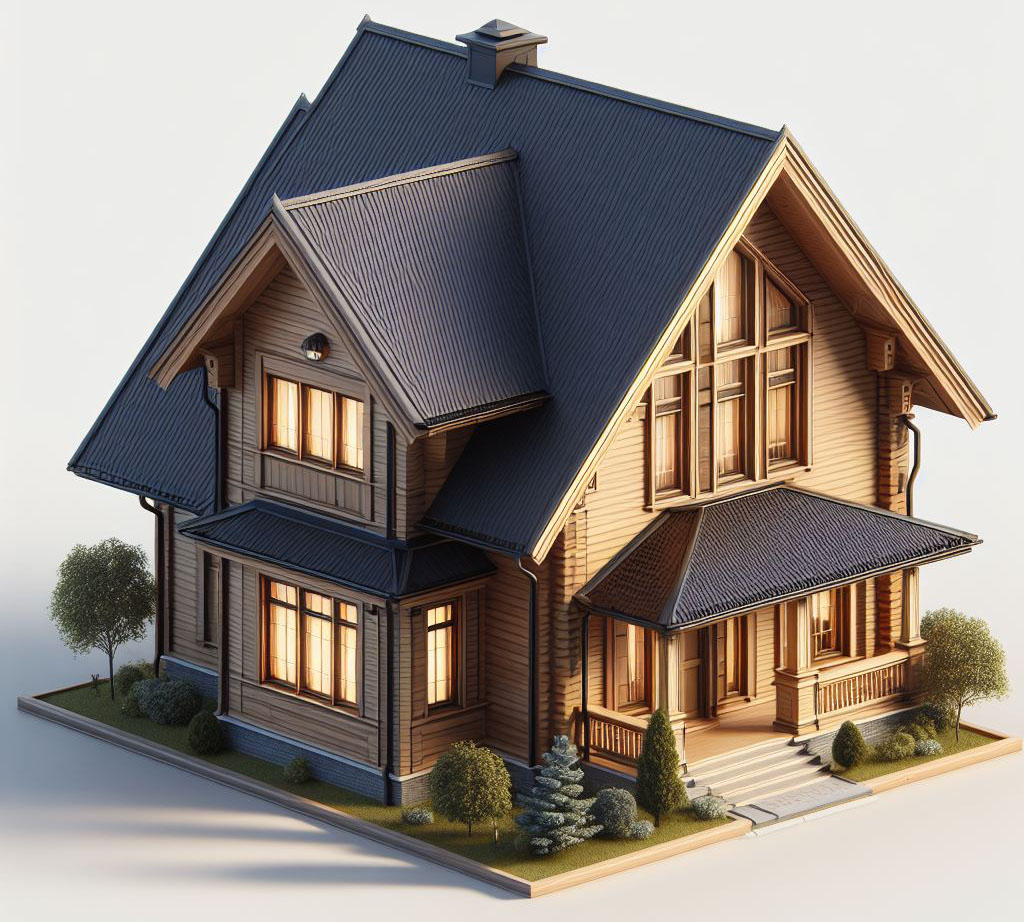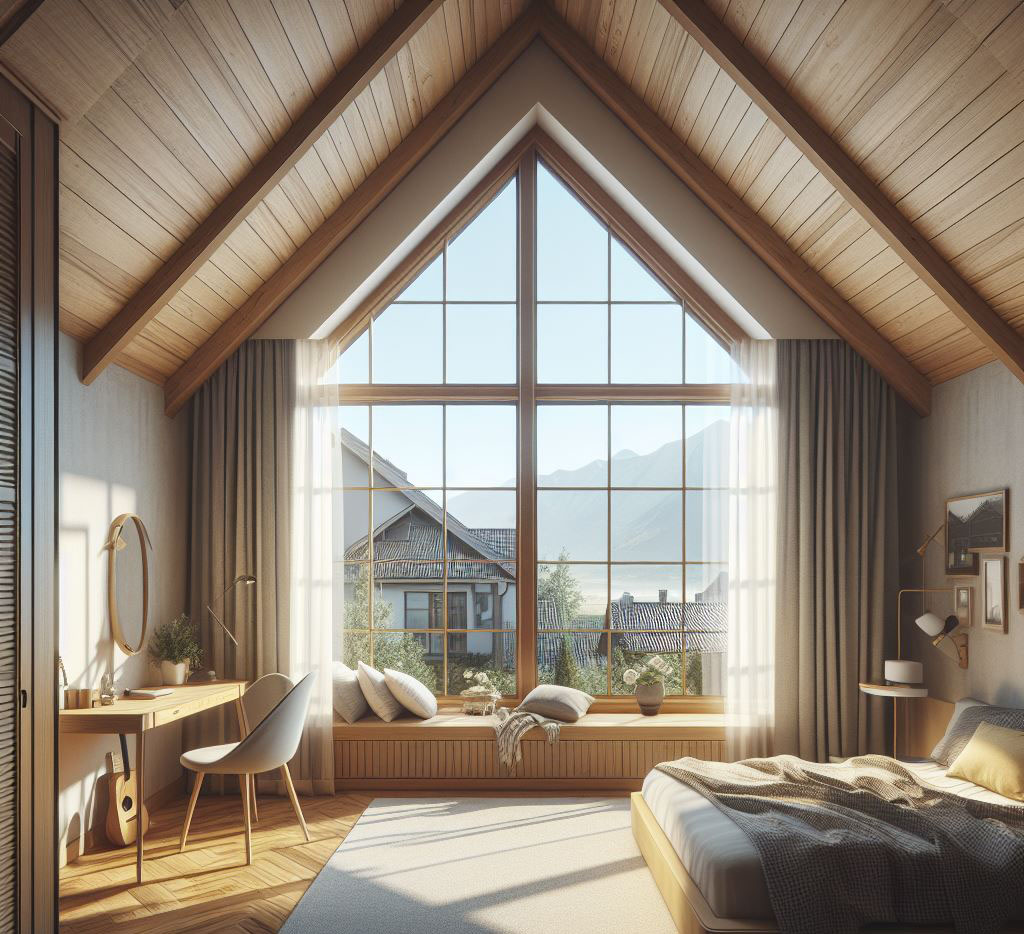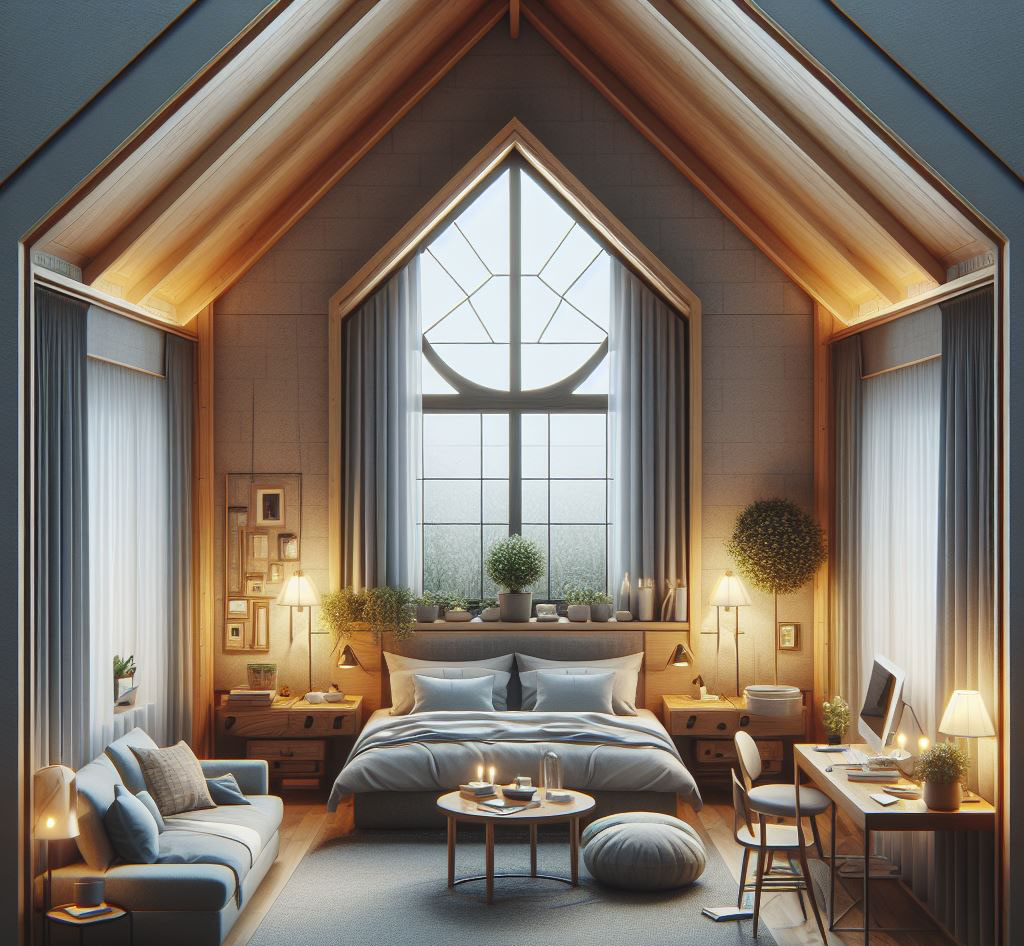Dormer windows are not just a feature, they’re a game-changer in home design. By breaking through the roof, they introduce light, air, and space where it’s most needed, transforming attic dead zones into vibrant living areas. Beyond adding charm, they serve practical purposes that can significantly enhance both the aesthetics and functionality of your home. Whether you’re retrofitting an old charmer or building anew, understanding the ins and outs of dormer windows can make a world of difference in your project.

Types of Dormer Windows
- Gable Front Dormer. This classic A-frame design fits seamlessly into a variety of home styles, from rustic farmhouses to modern retreats. Its pitched roof not only adds traditional charm but also sheds rain and snow efficiently, making it a practical choice in any climate.
- Shed Dormer. With a single-planed roof that slopes downward at an angle, shed dormers are the workhorses of dormer windows. They maximize headroom and sunlight, making them ideal for adding functional living space in the attic.
- Hipped Roof Dormer. This type features three sloping planes that come together at the top, offering a more subdued design compared to its gable-fronted cousin. Its elegance lies in its simplicity, providing a sophisticated touch to both contemporary and traditional homes.
- Eyebrow Dormer. Known for its unique, curved shape, the eyebrow dormer adds a whimsical element to the roofline. It’s less about adding space and more about character, perfect for homes aiming for a distinctive architectural touch.
- Pedimented Dormer. Echoing the grandeur of classical architecture, pedimented dormers are adorned with ornate features like columns and triangular pediments. They’re best suited for homes with a historic or luxurious aesthetic.

Design Ideas for Window Dormers
- Contemporary Designs. Embrace clean lines and minimalist aesthetics with sleek, frameless windows or large panes of glass that allow light to flood in. Materials like steel or dark-colored frames can add a modern edge.
- Traditional Designs. Honor the past with divided light windows, detailed trim, and classic materials like wood. Dormers in traditional designs often feature elements that reflect the home’s overall architectural style, ensuring cohesion.
- Cottage-Style Designs. Aim for cozy and inviting with smaller, quaint windows, and perhaps a window box or two. Soft lines, louvered shutters, and warm, rustic materials help to achieve this look.
- Eclectic Designs. Don’t be afraid to mix and match elements for a one-of-a-kind look. Combine different dormer types, window styles, and materials to reflect your unique aesthetic.

Functionality and Benefits
- Enhancing Natural Light. Dormer windows pierce through the roof to illuminate dark attic spaces, transforming them into bright, welcoming areas perfect for bedrooms, offices, or playrooms.
- Increasing Ventilation. By opening up the roof, dormer windows improve air circulation throughout the home. This can be a game-changer in warmer climates or during the summer months, reducing the need for artificial cooling.
- Adding Living Space. One of the most significant advantages of dormer windows is their ability to convert underutilized attic space into habitable rooms. This not only adds square footage but also increases the versatility of your home.
- Improving Home Value. By enhancing the exterior appeal and adding functional living space, dormer windows can significantly boost your home’s curb appeal and, by extension, its market value.
Material and Color Choices
When it comes to materials, you’re looking at a spectrum from classic wood to modern vinyl and beyond. Wood brings a timeless warmth and can be customized to fit any architectural style but demands regular maintenance to fend off rot and pests. Vinyl, on the flip side, is the go-to for a set-it-and-forget-it approach, offering durability and ease of care without breaking the bank. For those looking to blend performance with aesthetics, fiberglass and metal options throw their hats in the ring, providing strength and efficiency with a side of style.
Color schemes play more than just a cosmetic role. The right palette can accentuate your home’s features and ensure your dormer windows don’t just add space but also visual appeal. Stick with hues that harmonize with your home’s existing color story—think complementary or contrasting shades that bring out the personality of your place. Whether you’re shooting for subtle elegance or a statement piece, the color of your dormer can tip the scales.

Installation Tips
Laying out the installation process, remember this isn’t a weekend warrior project unless you’ve got serious chops in carpentry and roofing. Here’s the scaffold:
- Design & Planning. Nail down your design and get all your ducks in a row with materials and tools. This phase is crucial for ensuring everything fits together perfectly.
- Cutting the Roof. A task that demands precision and a steady hand, cutting into your roof is step one in making space for your dormer.
- Framing. Building the skeleton of your dormer is next, shaping it to fit your design.
- Roofing & Waterproofing. Covering your dormer with roofing materials that match your existing setup is key, along with ensuring everything is watertight.
- Finishing Touches. This includes installing windows, siding, and interior work to make your dormer part of the home.
For DIY enthusiasts, weigh your skills and time against the complexity of the project. Sometimes, calling in the pros is the smart play, ensuring your dormer is up to code and built to last.
Maintenance and Care
Keeping your dormer windows in prime condition means regular check-ups and a bit of elbow grease. Inspect them annually for signs of wear and tear, especially around seals and flashing where leaks could occur. Cleaning the windows and checking the frames for damage or rot can prevent small issues from becoming big headaches. Seasonal maintenance, like clearing gutters and checking for ice dams in winter, will extend the life and function of your dormer windows.

FAQ Section
Budget-wise, dormer windows are a significant investment. Costs can vary widely based on size, materials, and whether you’re going DIY or hiring pros. Plan for a range, but remember, the added space and light often offset the initial outlay by boosting home value.
Absolutely, but tread carefully. Historic homes may have restrictions or require permits to ensure any additions are in keeping with the original style. Consulting with a specialist or your local historic commission can steer you clear of any pitfalls.
Timing can swing from a few days to several weeks, hinging on the complexity of your dormer, weather conditions, and whether you’ve got a crew or you’re flying solo.
More often than not, yes. Most municipalities require permits for structural changes to ensure they meet building codes. A quick chat with your local building department can set you straight.
Start by considering your home’s architectural style and your personal taste. Look at examples of similar homes with dormers to spark ideas. Consulting with a designer or architect can also help you make a decision that blends form and function beautifully.
